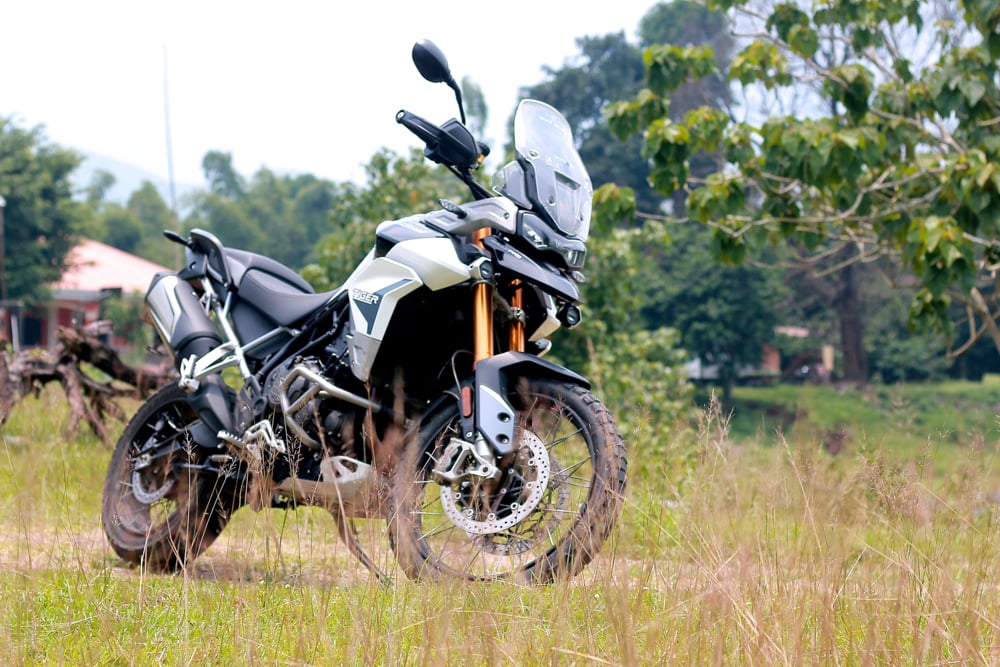
Adventure bikes are versatile machines, and the Triumph Tiger 900 range comes in several flavors. The GT Pro is the road-oriented touring machine, while the GT Low is for riders with a short inseam. The Rally Pro tested here is the off-road capable version, outfitted with long-travel adjustable suspension, dual-sport Pirelli Scorpion rubber, and some other stuff for getting dirty.
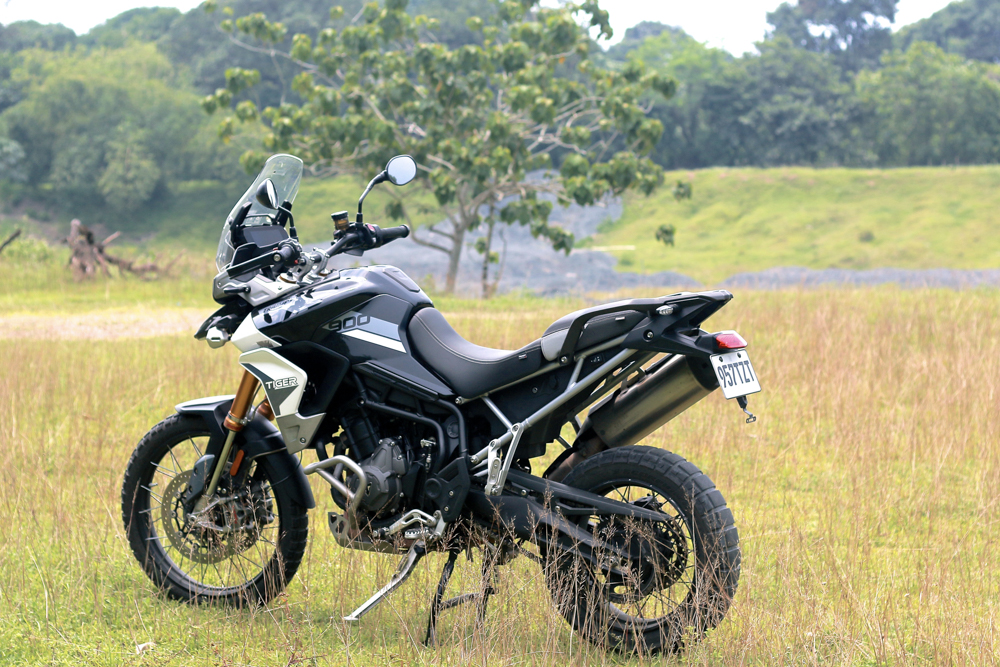
Before we even get to the riding experience, let’s talk about the styling first. It’s a fact that adventure bikes aren’t the prettiest of the lot. KTM has the angry-mantis look; Suzuki goes for the two-wheel Cyclops Jaeger effect; BMW tries to look like an A-wing starfighter; and here, Triumph I think is aiming to look like an Apache attack helicopter. There’s something about the compound curves of that windscreen, coupled with the shape of the LED headlamps that remind me of my favorite chopper. It looks futuristic and a little mean, but nothing over the top.
Positive first impressions always lead to a desire to ride it somewhere far, and for my test, I thought a 400km round trip to Zambales would suffice. Miles and miles of expressway, twisty bits, and stretches of gravel.
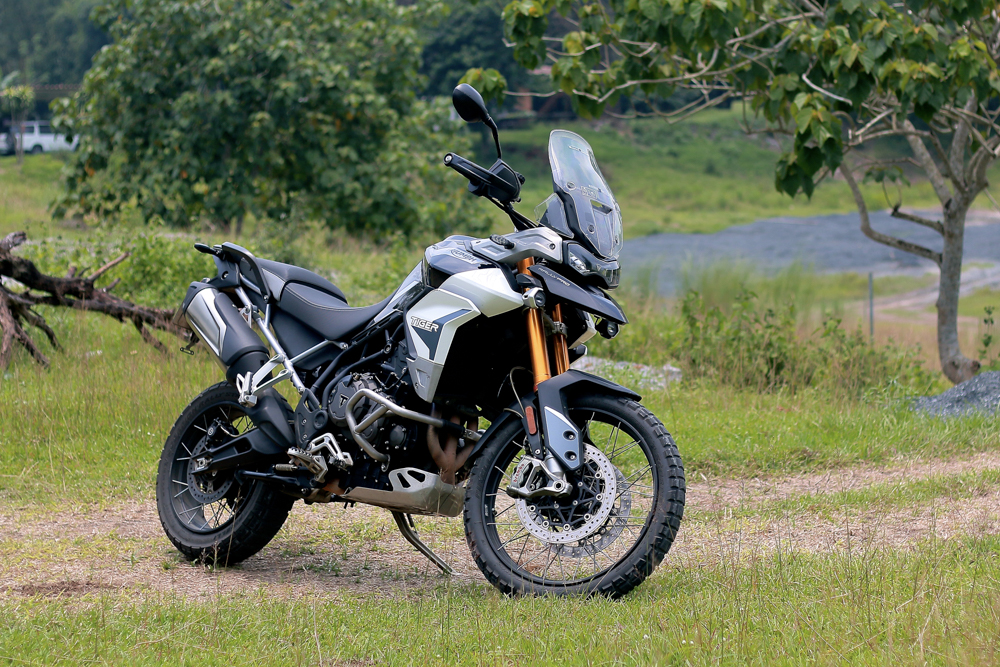
The heart of any Tiger 900 is an 888cc triple-cylinder motor. Rated at 93.9hp and 87Nm, it’s capable of taking the Tiger a little over 200km/h, but more important is how it unleashes the horses. Redline is 8,750rpm, but the bike is quite svelte at just 201kg (dry) that even part throttle opening is enough to get you going quickly.
The beauty of the three-cylinder design is that it gives plenty of grunt at low rpm, while still being a revvy bastard. Whether in EDSA traffic or cruising on the highway, the motor pulls smoothly from as low as 2,000rpm without any hiccups. Vibrations become prominent at the 6,000rpm mark, but trips to the redline will be rare anyway. An up/down quickshifter is fitted as standard, and it works perfectly as long as you keep the revs above 3,000rpm. Otherwise, a little throttle-blipping is in order, and it’s no big deal because you get to enjoy the triple’s burbling exhaust note.
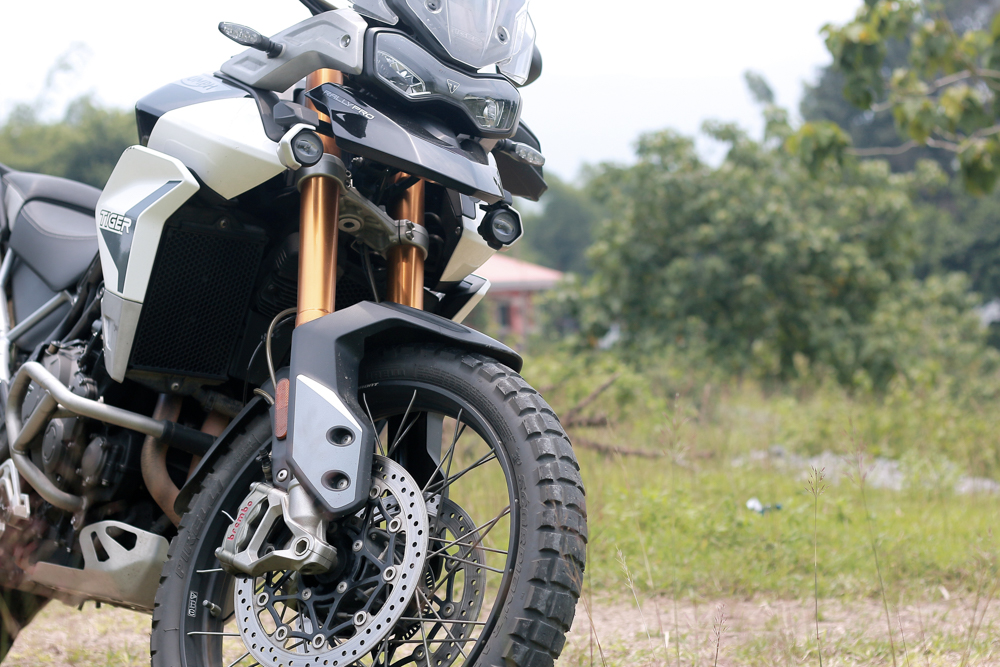
Showa supplies the suspension, and the inverted fork provides 240mm of travel with adjustments for compression, rebound and preload. The rear shock has 230mm of travel and is manually adjustable for rebound and preload. Set to my weight, the ride quality is taut without feeling harsh. The bike feels very stable on the highway and just glides over dirt roads. In tight esses and hairpins, it takes a while to adjust to the Tiger’s relatively high center of gravity if you’re used to riding smaller bikes, and the key is to go for a smooth, flowing technique rather than attacking each corner. The Brembo Stylema braking system is powerful and easy to modulate, too. A 21-inch front tire versus 19s for the GT provides greater off-road traction as well.
The stock seat height is 850mm at the lowest preload setting (it just about tiptoes for me at the front part of the seat). The saddle itself is nicely padded with a gentle swale and enough thigh support without flaring too wide. I’d say it’s a “90-minute saddle,” meaning that’s how long you can stay seated before you need to get up and stretch. Standing up at speed is a non-issue as the raised handlebars and the toothed foot pegs provide a solid base of support.
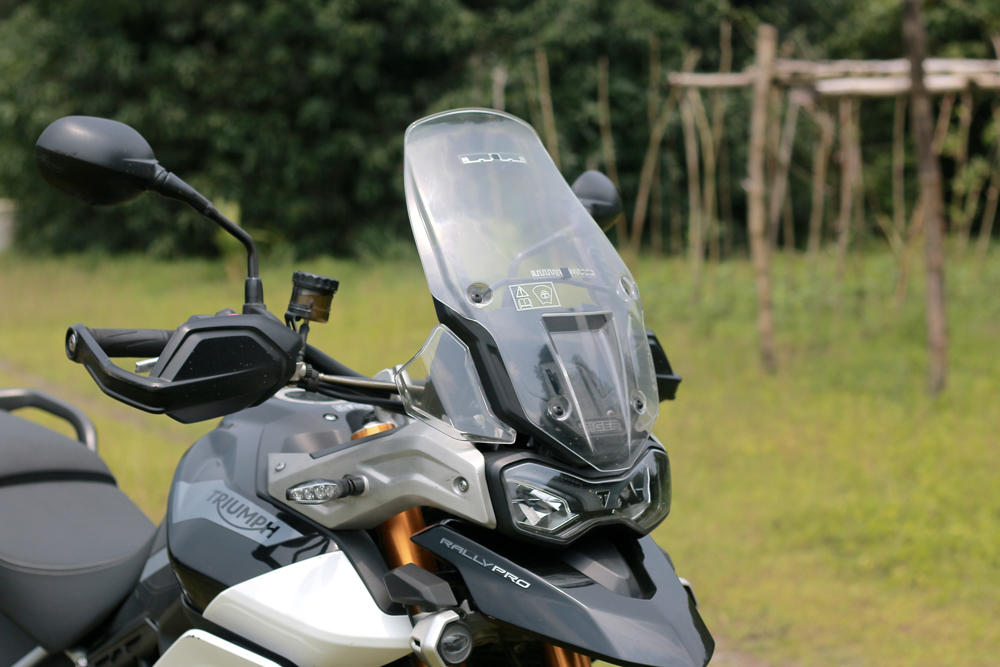
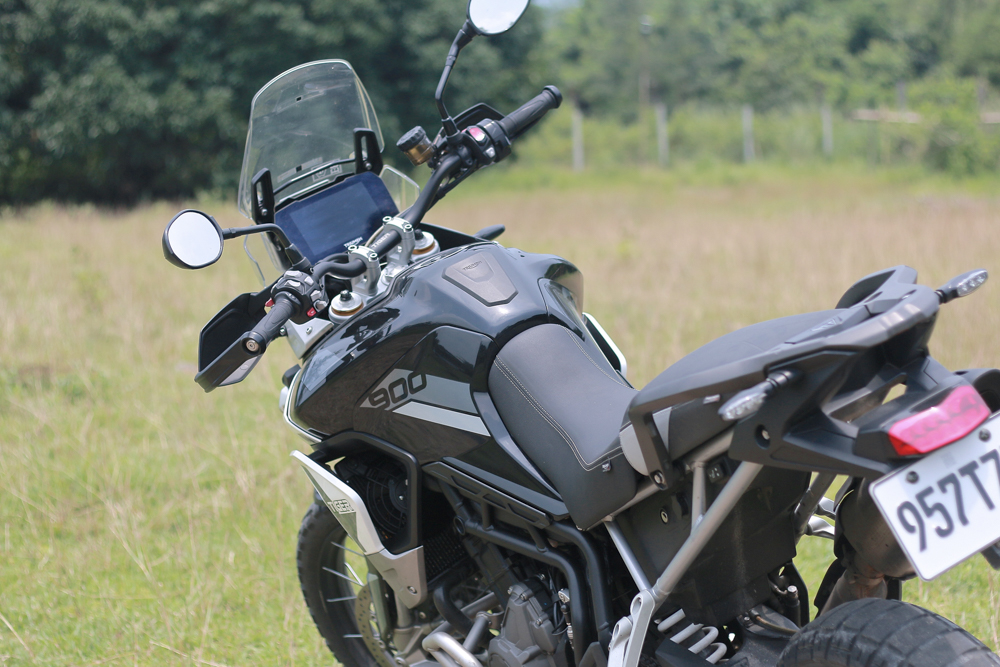
There were several issues that did stick out a bit. The windscreen does a great job of creating a turbulence-free “bubble,” but the distortion created by the complex shaping is distracting. It’s hard to make out potential trail obstacles, so you’re forced to stand to just see over the screen. The brake pedal is adjustable for reach with “high” and “low” settings, and it’s important that you set this properly before you ride. Mine was inadvertently set to high, creating an awkward angle between my foot and ankle that was tiring.
In slow-speed traffic, the high placement of the twin cooling fans vents hot air straight back to your inner thighs. For an “almost-liter” bike, it also guzzles fuel in traffic, averaging 14-15km/L in the city. Keep a light throttle on the highway and it will go as high as 27km/L, but it’ll be tough to resist the call of the zoomies.
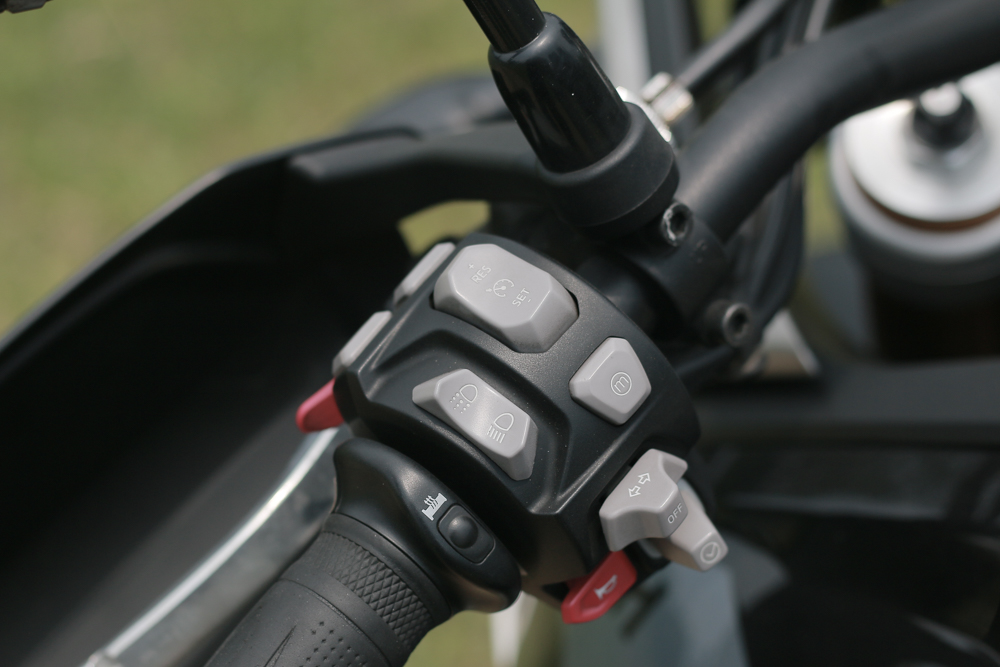
Finally, while it’s great that the Tiger has a large seven-inch TFT dash, somebody may have gotten too clever with the tachometer design. Flipping through the options, you can choose from several neat color schemes, but the only rev-counter display options are digital numbers or a stylized bar graph that seems to have a winged motif. Ah, just give us a good ol’ analog-style tach and we’ll be right as rain.
On the other hand, the dash is comprehensively detailed. Cruise control, various riding modes, and lean-sensitive traction control and ABS are just some of the bike’s tricks. Aside from the usual trip information, you can also sync your phone music and GoPro to it. Navigating the menus is done with a little thumbstick on the left-hand pod. The display is big enough that you can flip through menus while you’re moving, checking the display with your peripheral vision or a quick glance. It’s also legible even under harsh daylight, and it’s a constant source of wow for gas-station attendants.
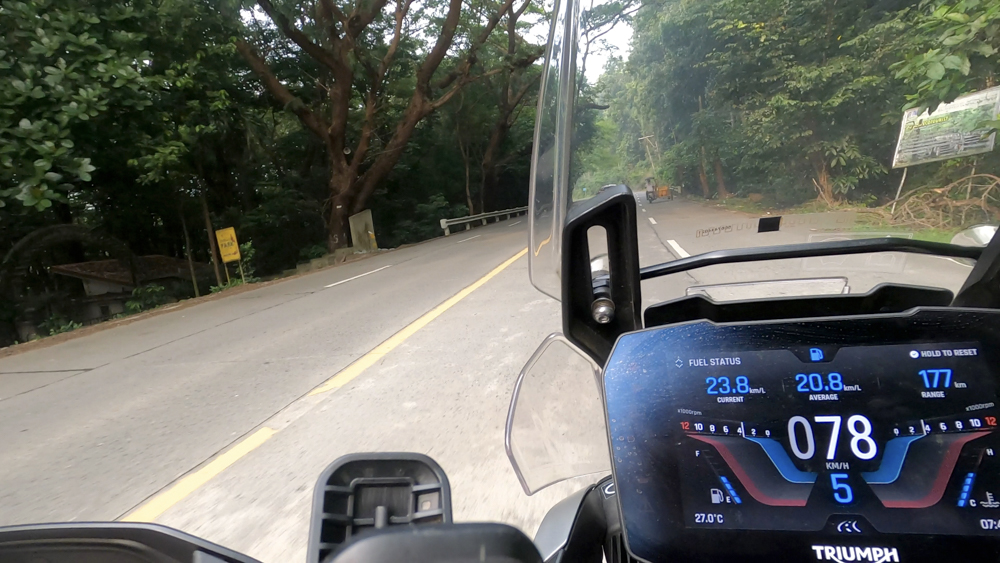
The bar grips and the seat also have adjustable heating so you and your pillion rider can be nice and warm on a chilly day. Fit and finish—as expected of a high-end bike—is excellent.
A sticker price of P1,150,000 puts it at a premium over mid-capacity bikes like the KTM 790 Adventure R and the BMW F850 GS. Compared to the endearing rawness of the KTM or the subdued appeal of the BMW, the Tiger feels almost stately and dignified—your typical British charmer.
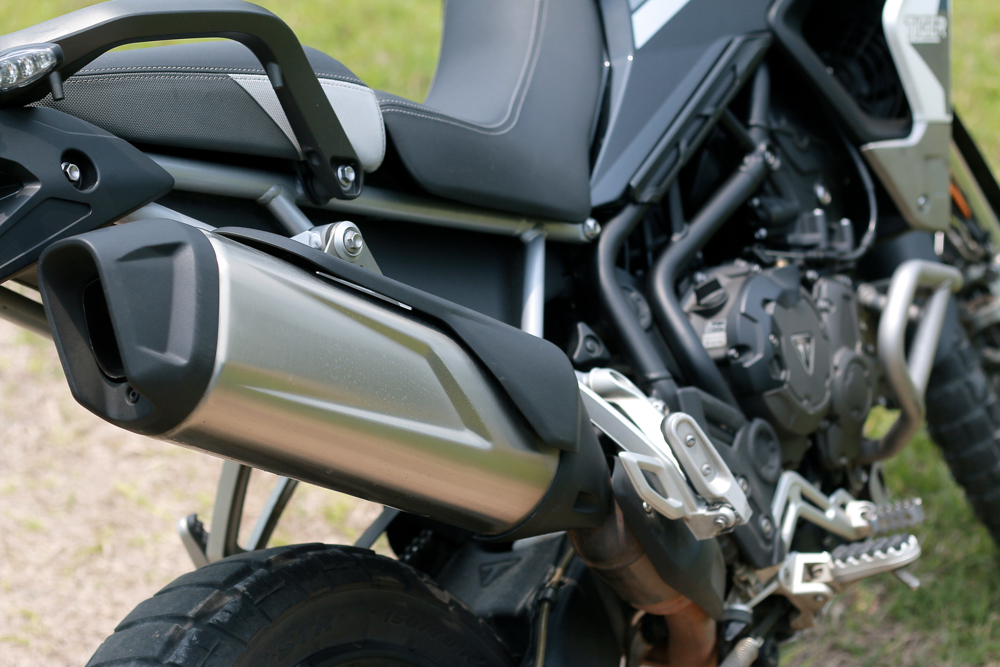
Over the course of my daylong ride, I found myself liking the Tiger more and more. It doesn’t stun you with spellbinding performance, but before you know it, you’re already at a brisk pace and enjoying the scenery. It has a lot of features for the money, all of which have a purpose that you’ll use sooner or later. Triumph has a fabulous collection of bikes for the sporty/retro crowd, but the Tiger’s understated competence will win anyone over.


0 Comments